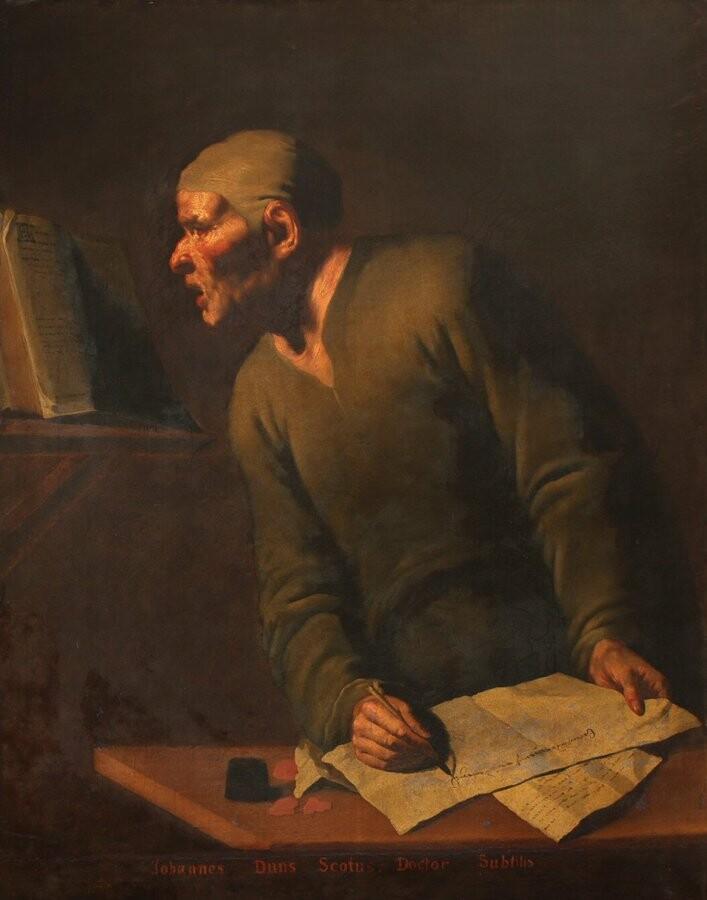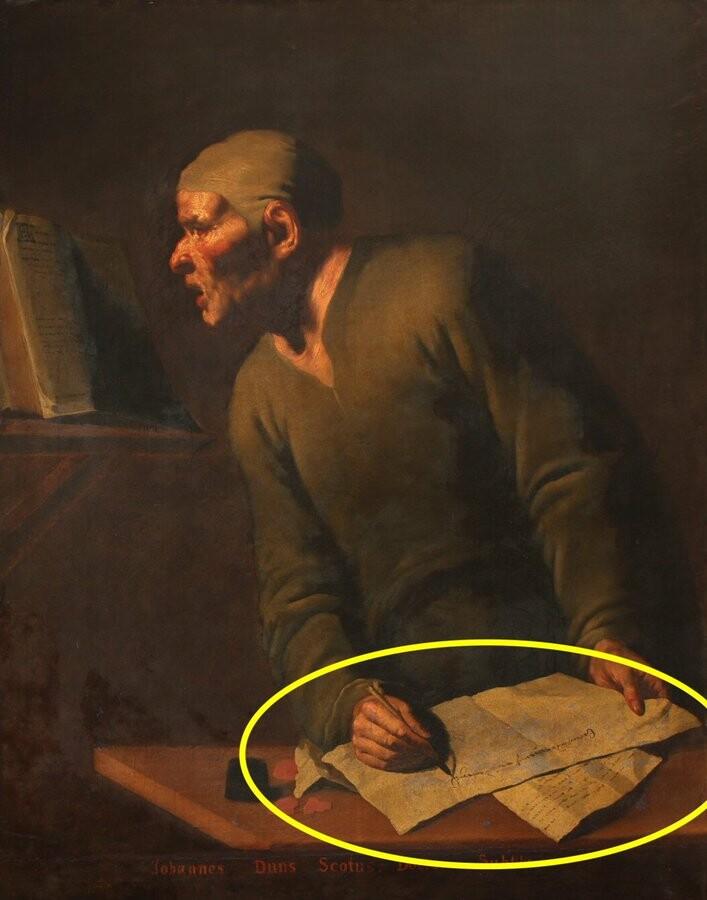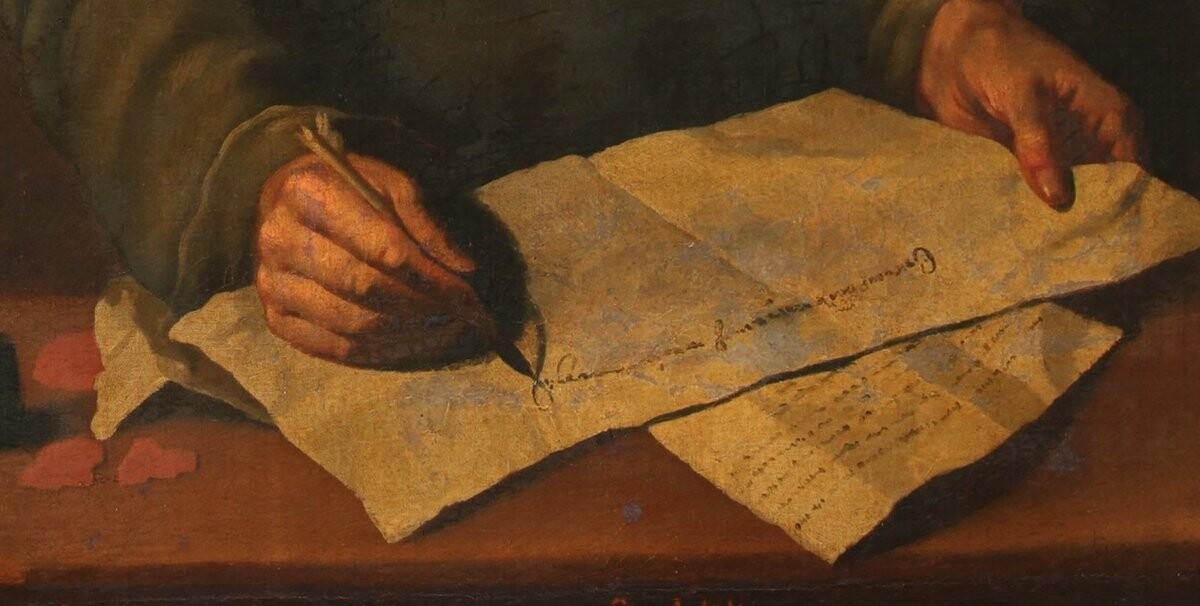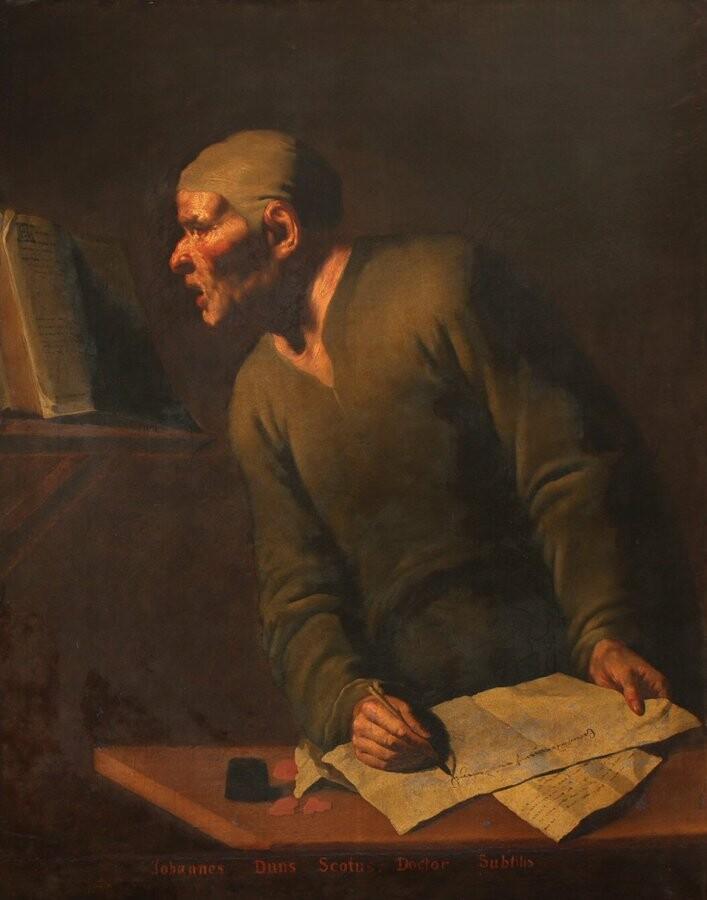he man copying a few lines from an open book onto a fresh sheet of paper was a well-known Franciscan friar: John Duns Scotus who lived between 1265-1308.
-
he man copying a few lines from an open book onto a fresh sheet of paper was a well-known Franciscan friar: John Duns Scotus who lived between 1265-1308. The paper user on this painting is one of the important philosopher-theologians of Europe, dear #histodons.
But what paper was available around 1300 in Europe? Is the paper usage imagined on this painting that was done about 300 years after his death. Follow me for more...
A thread for those interested in #PaperHistory #BookHistory
1/3


-
Daniel Bellingradtreplied to Daniel Bellingradt last edited by
Today, the painting that imagined a typical working scene of a celebrity scientist that was educated in #Oxford, lived in #Paris and died in #Cologne, can be found here:
https://digital.bodleian.ox.ac.uk/objects/d361c90c-1cdd-441f-b207-f83a6a5e6472/#
So what paper could he possibly have used around 1300 in Oxford, Paris or Cologne? We know that the artifact 'paper' was introduced and produced in Europe first by Arab papermakers and via Arab trade contacts from the eleventh and twelfth centuries.
2/3

-
Daniel Bellingradtreplied to Daniel Bellingradt last edited by
Europe’s first paper age may have started with trade imports but a separate way of producing paper developed, starting in the early thirteenth century on the Iberian Peninsula and in Italy. Around 1300 a few mills produced European paper. Fancy more: https://brill.com/display/book/edcoll/9789004424005/BP000010.xml
The 300 years later imagined paper using scene might be correct. Writers living in Oxford, Paris or Cologne did have access to the paper flows provided by the paper trade. Paper markets were a thing around 1300.
3/3

